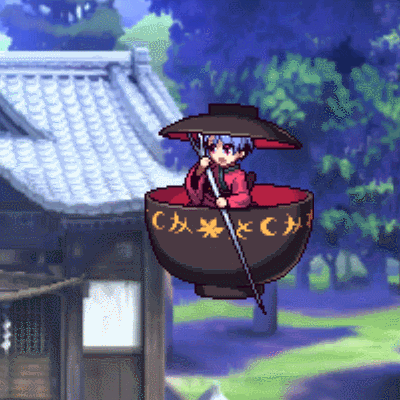

Players direct a Yin-Yang Orb (陰陽玉 Onmyō-gyoku) by side-kicking, swinging Reimu's purification rod (御幣 gohei), and firing amulets (御札 ofuda), with the goal of using it to overturn all the cards in a level. It features gameplay similar to Arkanoid and differs from the vertically-scrolling format of later games. After the destruction of the shrine, she charges through a gateway to another world, intent on locating and punishing those responsible.
#TOUHOU URBAN LEGEND IN LIMBO SPRITES SERIES#
It features the first appearance of series protagonist Reimu Hakurei, the miko of Hakurei Shrine (博麗神社 Hakurei Jinja). ZUN began development in 1995 and first showcased the game in November 1996 at the 20th Hatoyama Matsuri, the annual fair held at the Hatoyama campus of Tokyo Denki University.
"Wondrous Tale") The 1st game in the series, was released on August 15, 1997, at Comiket 52. Highly Responsive to Prayers ( 東方靈異伝, Tōhō Reiiden, lit. The games were published by Amusement Makers, a student game development club that Ōta was a member of. Jun'ya Ōta, who was then a mathematics student at Tokyo Denki University working under the name "ZUN Soft", developed the first five Touhou games for NEC PC-9800 personal computers, utilizing the platform's 16-bit color graphics and 6-channel FM synthesis audio.
#TOUHOU URBAN LEGEND IN LIMBO SPRITES TRIAL#
Unofficial works are frequently sold at fan conventions, including Comiket, where the franchise has frequently held the record for circle participation, and the official convention Reitaisai, where trial versions of the official games are typically distributed prior to release.Ĭover art for the PC-98 Touhou games PC-98 games The popularity of the series and its derivative works has been attributed in part to the few restrictions placed by ZUN on the use of his content. Because of this, it has gained somewhat of a cult following outside of Japan. Touhou Project has become particularly notable as a prominent source of Japanese dōjin content, with the series spawning a vast body of fan-made works such as artwork, music, print works, video games, and Internet memes. Numerous sequels followed, including several spin-offs departing from the traditional bullet hell format. The release of Embodiment of Scarlet Devil in August 2002 marked a shift to Microsoft Windows. 'bullet curtain') mechanics were introduced in the second game, Story of Eastern Wonderland (also 1997). The first five games were developed for the Japanese NEC PC-9800 computer series, with the first, Highly Responsive to Prayers, released in August 1997 the series' signature danmaku (弾幕, lit. Reimu Hakurei, the miko of the Hakurei Shrine and the main character of the series, is often tasked with resolving supernatural "incidents" caused in and around Gensokyo. The Touhou Project is set in Gensokyo, a land sealed from the outside world and primarily inhabited by humans and yōkai, legendary creatures from Japanese folklore that are personified in Touhou as bishōjo in an anthropomorphic moe style. ZUN has also produced related print works and music albums, and collaborated with developer Twilight Frontier on seven official Touhou spin-offs, most being fighting games. Since 1995, the team's member, Jun'ya "ZUN" Ōta, has independently developed programming, graphics, writing, and music for the series, self-publishing 18 mainline games and five spin-offs as of May 2021. The Touhou Project ( Japanese: 東方Project, Hepburn: Tōhō Purojekuto), also known simply as Touhou ( 東方, literally "Eastern direction"), is a bullet hell shoot 'em up video game series created by one-man independent Japanese doujin soft developer Team Shanghai Alice.


 0 kommentar(er)
0 kommentar(er)
